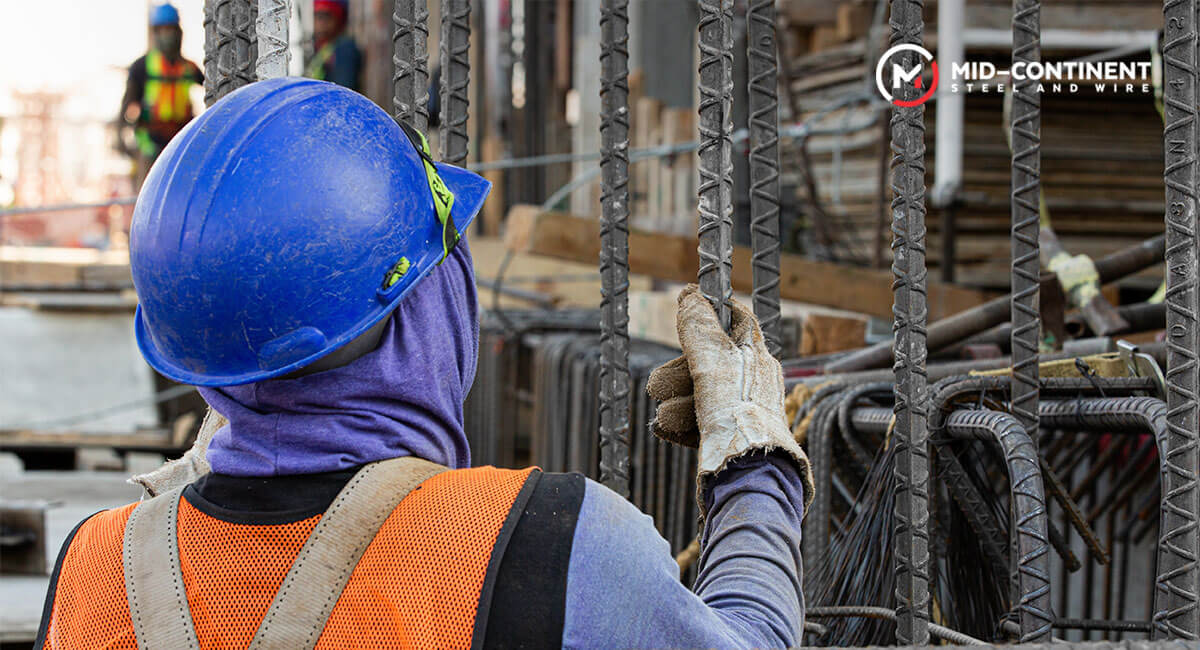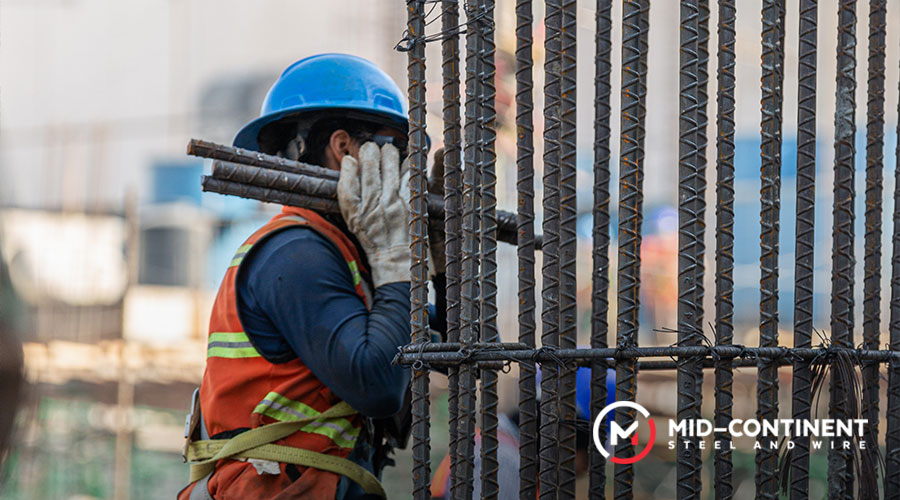
Reinforcing steel bars, commonly known as rebar, are used in concrete structures to enhance their tensile strength and durability. In this blog, we will explore some of the factors that make them an essential part of construction projects.

Main characteristics of steel rebar
There are many factors that constitute steel reinforcement bars. These are some of them:
- Material composition: Rebar is typically made from carbon steel, with varying grades and compositions based on specific structural requirements. They provide high strength and ductility.
- Physical features: Rebar comes in various diameters, typically ranging from 6 mm to 40 mm (0.25 inches to 1.5 inches). They are often round in cross-section, but can also be deformed with ribs or patterns along their length to enhance bonding with concrete.
- Types of rebars: Deformed rebar has ribs, lugs, or indentations on the surface to provide better adhesion with concrete. The deformations increase mechanical bonding, preventing slippage between the rebar and concrete. Plain rebar is smooth-surfaced, used in applications where mechanical bonding is not required, such as for dowels or ties.
- Recycling properties: Steel rebar is highly recyclable, contributing to sustainable construction practices by reducing raw material consumption and waste generation.
- Grade: Rebar is available in different strength grades, such as Grade 40, Grade 60, Grade 75, etc. These indicate their yield strength. Higher grade rebars provide greater strength and load-bearing capacity.

How does rebar benefit construction?
Steel rebar has many benefits for the structure of any building. Each reinforcing bar has a job to do and is part of the strength of the whole project. These are some of the benefits of reinforced concrete construction:
- Tensile strength improvement: Rebar provides tensile strength to reinforced concrete elements, such as beams, columns, slabs, and foundations.
- Load bearing and structural support: Rebar helps distribute loads more effectively throughout the concrete structure, improving its load-bearing capacity and overall structural stability.
- Control of cracking: By reinforcing concrete with rebars, engineers can control and minimize cracking, especially under heavy loads, seismic activity, or temperature fluctuations.
- Durability enhancement: Rebar increases the durability and lifespan of concrete structures by reducing the risk of structural failure and improving resistance to environmental factors such as corrosion.
- Control of concrete shrinkage: Rebar helps mitigate the effects of concrete shrinkage, which occurs during the curing process as water evaporates and the concrete settles.

Invest in products that last
Mid-Continent Steel and Wire provides our customers with rebar for the manufacturing and commercial markets. They are available in different sizes, grades, and lengths. Improve the quality of your constructions with sustainable products.

